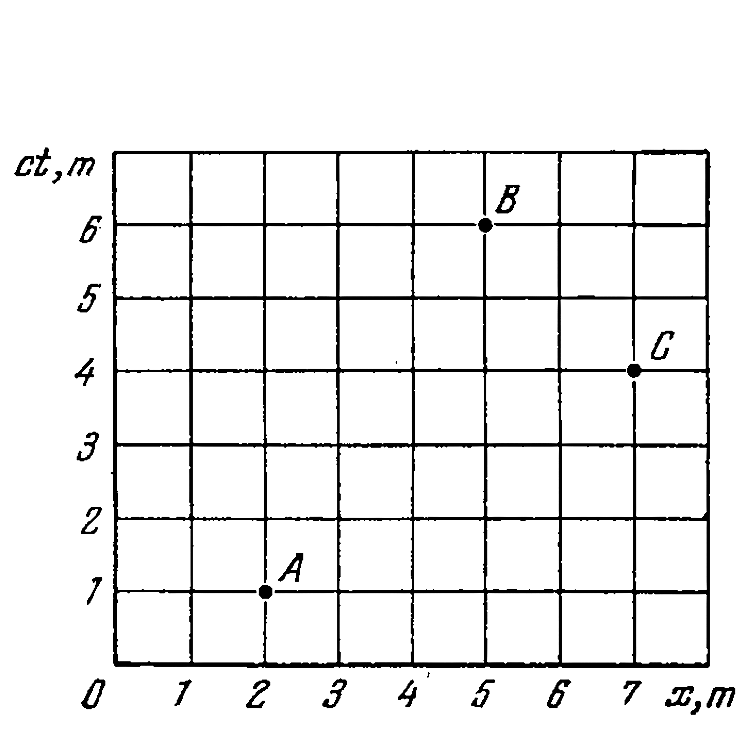Two events occur on the x axis separated in time by Δt and in space by Δx. A reference frame, traveling at less than the speed of light, in which the two events occur at the same time
Exists no matter what the values of Δx and Δt
Exists only if Δx/Δt<c
Exists only if Δx/Δt>c
Does not exist under any condition
The correct Answer is:D
Topper's Solved these Questions
- RELATIVITYBOOK - RESNICK AND HALLIDAYCHAPTER - RELATIVITYEXERCISE - PRACTICE QUESTIONS (Linked Comprehension)
11 Videos
- RELATIVITYBOOK - RESNICK AND HALLIDAYCHAPTER - RELATIVITYEXERCISE - PRACTICE QUESTIONS (Integer Type)
5 Videos
- RELATIVITYBOOK - RESNICK AND HALLIDAYCHAPTER - RELATIVITYEXERCISE - PROBLEMS
49 Videos
- PHOTONS AND MATTER WAVESBOOK - RESNICK AND HALLIDAYCHAPTER - PHOTONS AND MATTER WAVESEXERCISE - PRACTICE QUESTIONS(Integer Type)
4 Videos
- RIGID BODY DYNAMICS - IBOOK - RESNICK AND HALLIDAYCHAPTER - RIGID BODY DYNAMICS - IEXERCISE - PRACTICE QUESTIONS (INTEGER TYPE))
3 Videos
Similar Questions
The space-time diagram, shows three events A, B, and C which occurred on the x axis of some inertial reference frame. Find:
(a) the time interval between the events A and B in the reference frame where the two events occurred at the same point,
(b) the distance between the points at which the events A and C occured in the reference frame where these two events are simultaneous.

View SolutionTwo events A and B occur at places separated by 106km, B occuring 5s after A . (a) Find the velocity of a frame in which these events occur at the same place . (b)What is the time interval between the events in this frame ?
View Solution
Knowledge Check
Two events occur simultaneously at separated points on the y axis of reference frame S. According to an observer moving in the positive x direction
AThe event with the greater y coordinate occurs firstBThe event with the greater y coordinate occurs lastCEither event might occur first, depending on the observer's speedDThe events are simultaneousIf A. B. C are three events, then what is the probability that atleast two of these events occur together?
AP(A∩B)+P(B∩C)+P(C∩A)BP(A∩B)+P(B∩C)+P(C∩A)−P(A∩B∩C)CP(A∩B)+P(B∩C)+P(C∩A)−2P(A∩B∩C)DP(A∩B)+P(B∩C)+P(C∩A)−3P(A∩B∩C)If A, B, C are three events, then what is the probability that at least two of these events occur together?
AP(A∩B)+P(B∩C)+P(C∩A)BP(A∩B)+P(B∩C)+P(C∩A)−P(A∩B∩C)CP(A∩B)+P(B∩C)+P(C∩A)−2P(A∩B∩C)DP(A∩B)+P(B∩C)+P(C∩A)−3P(A∩B∩C)
Two events A and B occur at places separated by 106km, B occuring 5s after A . (a) Find the velocity of a frame in which these events occur at the same place . (b)What is the time interval between the events in this frame ?
View SolutionIf AandB are two events, the probability that at most one of these events occurs is
View SolutionInertial frame S' moves at a speed of 0.65c with respect to frame S (Fig. 36-11). Further, x=x'=0 at t=t'=0. Two events are recorded. In frame S, event 1 occurs at the origin at t = 0 and event 2 occurs on the x axis at x = 3.0 km at t = 4.0 μs. According to observer S', what is the time of (a) event 1 and (b) event 2? (c ) Do the two observers see the same sequence or the reverse?
View SolutionTwo dice are thrown. Let A be the event that the sum of the two faces is an even integer and B be the event that the sum is not less than 10. Then the probability that only one of the two events will occur is
View SolutionTwo events occur simultaneously on the x axis of reference frame S, one at x = 0 and the other at x = +1. According to an observer moving in the positive x direction
View Solution
